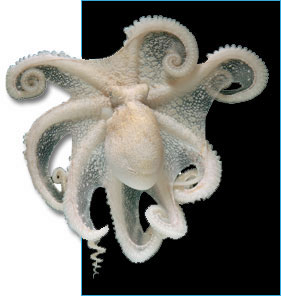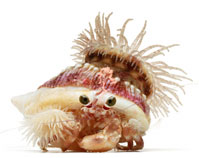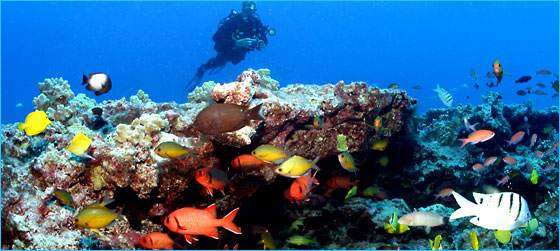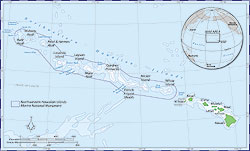 | ||||||||||||||||
|
|
|
|
|

Archipelago—Brings the Place to the PeopleThe photographic exhibit Archipelago: Portraits of Life in the World’s Most Remote Island Sanctuary by Susan Middleton and David Liittschwager embodies the Monument’s effort to “Bring the place to the people.” Portrait photographs of flora and fauna provide a stunning display of the residents—large and small—of the fragile Northwestern Hawaiian Islands ecosystems. Through a highly acclaimed, monument coordinated circuit of the main Hawaiian Islands, the photographic and speaking tour captured the imagination of thousands of students, teachers, residents, and visitors.
The images in this traveling exhibit are integral to building and maintaining public support for the Northwestern Hawaiian Islands. The exhibit provides a unique view of the monument and its inhabitants—highlighting both the rare, delicate nature of the ecosystem and the impacts to wildlife from marine debris. The traveling exhibit is sponsored in part by the National Geographic Society and the National Marine Sanctuary Foundation. Telepresence Pilot in Hawaii a Huge SuccessA telepresence demonstration on Oahu highlighted the potential of using this new technology to expand marine environmental awareness in classrooms. A marine biologist spoke with students at Moanalua High School, 20 miles away in Honolulu, while working underwater on coral reefs in Kaneohe Bay. Protected from surf by Hawaii’s only barrier reef, Kaneohe Bay is unique among Hawaiian marine ecosystems for its abundance of corals. Through this engaging and personal experience, students learned about the native marine life and the threats caused by alien algae and land based run off – inspiring them to become future ocean stewards. As telepresence becomes more accessible, it can be an effective tool in raising ocean literacy in communities nationwide. The Kaneohe Bay Telepresence Project was made possible through a partnership with Hawaii Institute of Marine Biology and Hawaii Department of Education. Monument Volunteer Honored as Volunteer of the YearLongtime Monument volunteer Linda Paul received the National Marine Sanctuary Foundation’s 2006 Volunteer of the Year award at a gala dinner in Washington DC. As a charter advisory council member and the vice-chair, Paul has long been a devoted advocate for protection of the Northwestern Hawaiian Islands. Additionally, Paul is the executive director for aquatics for the Hawaii Audubon Society. The awards dinner in June was part of Capitol Hill Oceans Week, an annual NOAA symposium co-hosted with the Foundation that brings together a wide-range of stakeholders to discuss current ocean and coastal issues. Links Between Johnston Atoll and the Northwestern Hawaiian Islands ExploredJohnston Atoll, located 500 miles south of French Frigate Shoals, is the most isolated atoll in the world. Despite its isolation biologists believe that the atoll may be a key stepping stone that links marine species of the Central, South and Western Pacific to the Hawaiian Archipelago via French Frigate Shoals. In June, the NOAA Ship Hi‘ialakai completed a 25-day research cruise to the Northwestern Hawaiian Islands and Johnston Atoll to study ecosystem connectivity, apex predator movement, and coral health. Tissue samples taken from marine life will be analyzed using molecular and DNA techniques to assess population stock and the degree of connectivity between the reefs and atolls of the Northwestern Hawaiian Islands and Johnston Atoll. Undertaking this study is the first step in gaining more insight to the biodiversity of the Northwestern Hawaiian Islands and the region’s connection to other areas in the Pacific.
Plans for 2007
Click here to view print version. (pdf, 506K) |
|
|||||||||||
|
||||||||||||||||






